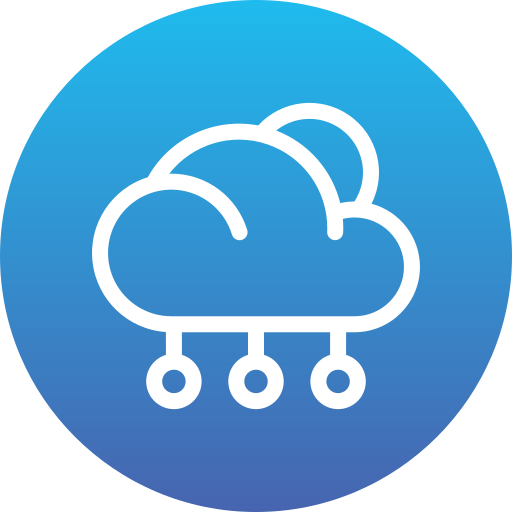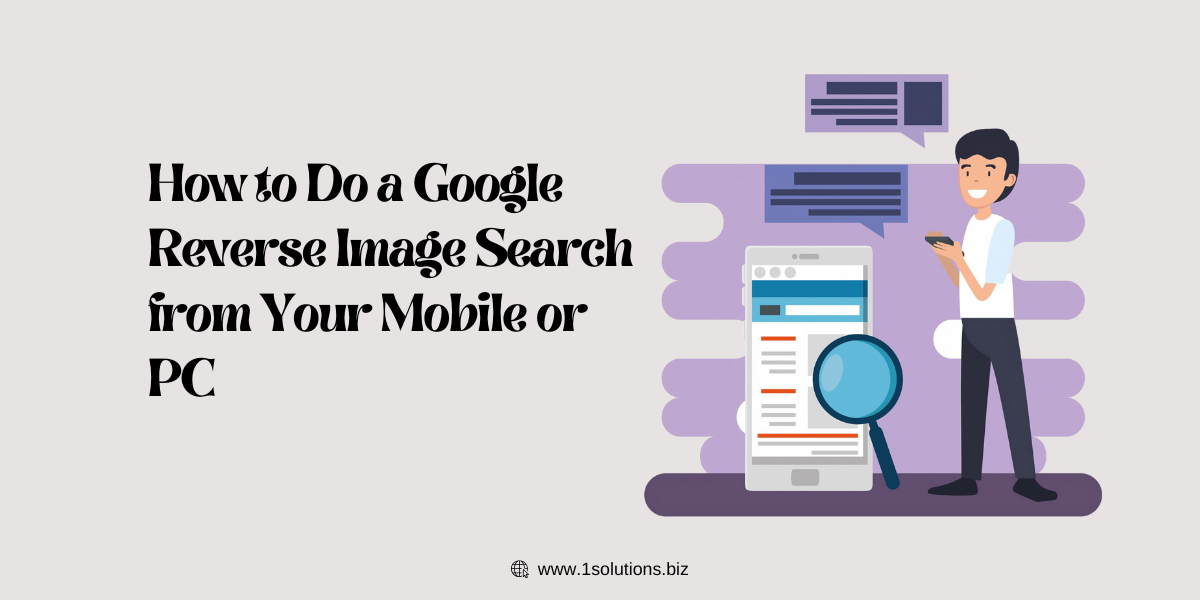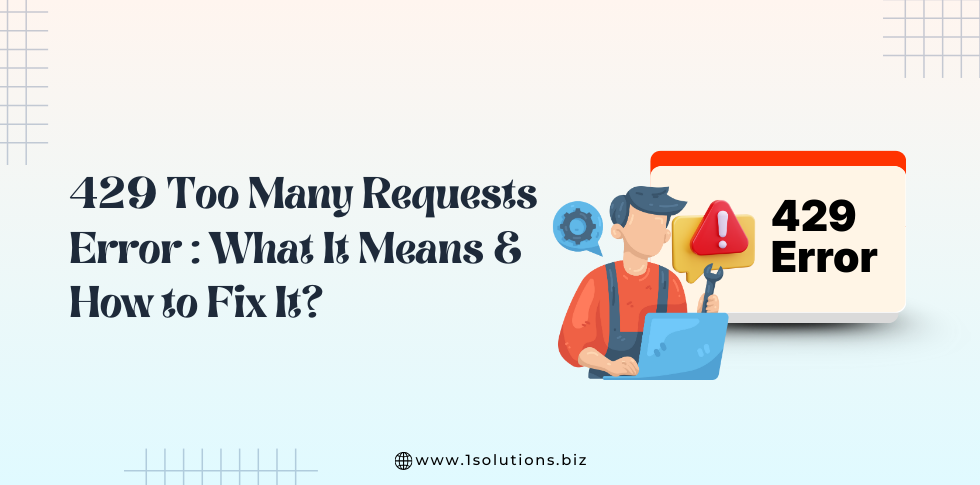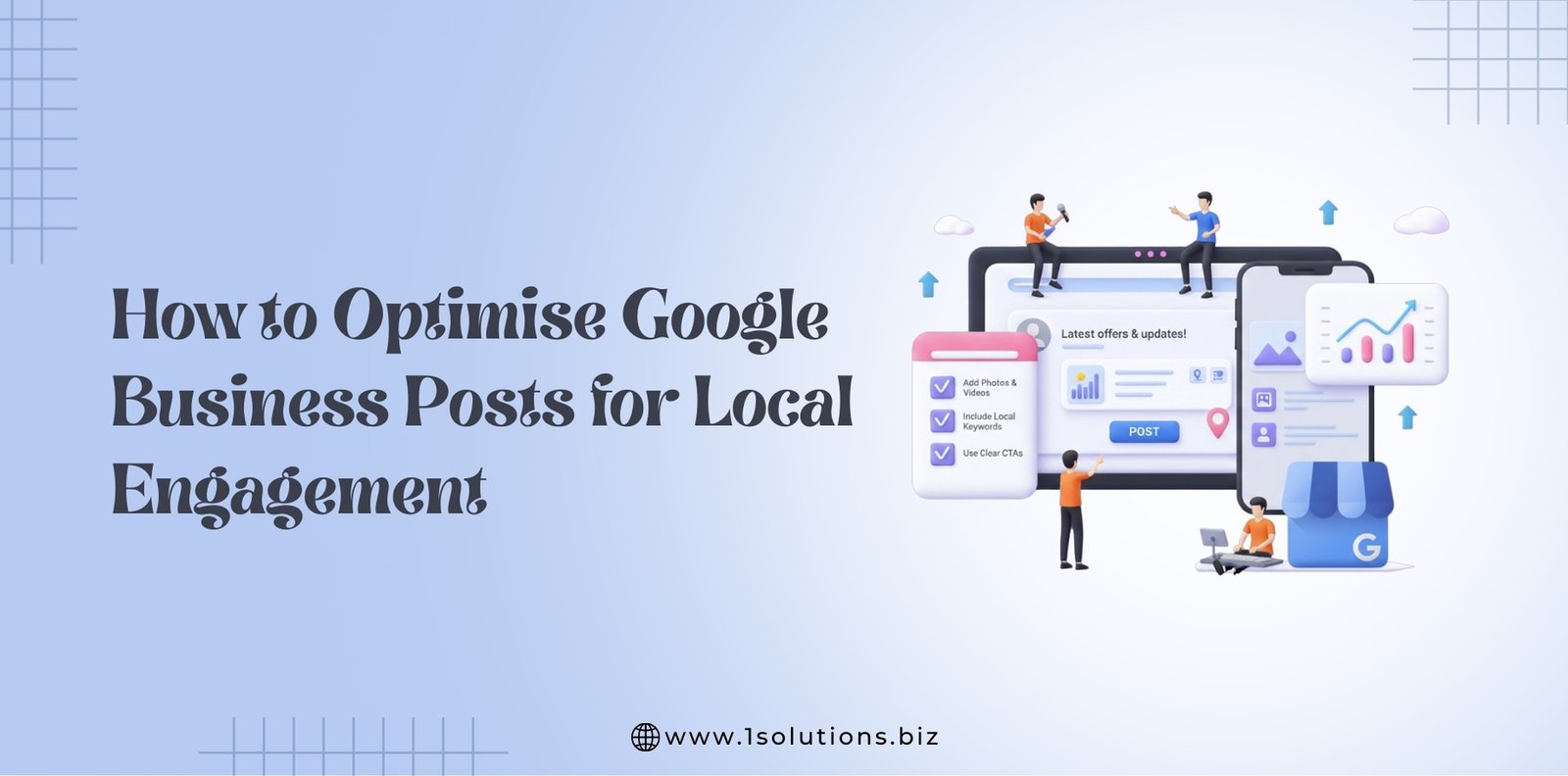Why You Need to Master Reverse Image Search Today
Ever stumbled across a photo online and thought, “Where is this from?” Or maybe you’ve seen a product image and wondered where to buy it – or worse, you’re a creator trying to find out who’s using your work without permission. In all these cases, Google Reverse Image Search is your secret weapon.
While most of us are used to typing words into a search bar, the internet now lets you search using images. That means instead of guessing keywords, you can upload or use a photo to find out more about it- from its origin to visually similar images, to the people, places, or objects featured in it. It’s like facial recognition for the web.
With the explosion of AI-generated content, fake profiles, and stolen visuals, reverse image search isn’t just a neat trick – it’s an essential digital literacy tool in 2025. Whether you’re a tech-savvy professional, an e-commerce buyer, a content creator, or simply someone trying to verify facts, knowing how to perform a reverse image search from your phone or PC gives you a serious advantage.
In this guide, we’ll walk you through everything you need to know: how Google Reverse Image Search works, how to use it on Chrome, Firefox, and mobile devices, alternative tools you can try, and real-world scenarios where this tool becomes a game-changer.
So, if you’ve ever wondered how to Google search by image or how to use Google Lens to identify something, you’re in the right place. Let’s unlock the power of your photos.
What Is Google Reverse Image Search and How Does It Work?
Google Reverse Image Search is a feature that lets you search the web using an image instead of text. Instead of typing in a keyword or phrase, you either upload an image, paste its URL, or use a built-in tool like Google Lens to find visually similar images, related web pages, or the original source of the photo.
How Reverse Image Search Works
When you perform a reverse image search on Google, the system uses advanced computer vision and image recognition algorithms to break down the photo into a set of identifiable features – like colors, shapes, patterns, and objects. It then compares this data to billions of indexed images on the web.
Here’s what happens under the hood:
- Image Analysis: Google analyzes the content of the uploaded image using machine learning models (like Convolutional Neural Networks) to understand what’s in the photo – e.g., faces, products, buildings, animals.
- Feature Matching: It converts those visual elements into metadata (vectors), which it then matches against its massive visual database.
- Contextual Matching: Google also looks at surrounding context (captions, filenames, alt-text, etc.) to improve search accuracy.
- Search Results Displayed: It returns results such as:
- Visually similar images
- Pages that include that image
- Possible related keywords or objects
- Image origin (if available)
This makes it especially useful for fact-checking, verifying photo authenticity, or tracking the online presence of a specific image.
Reverse Image Search vs. Regular Keyword Search
| Feature | Reverse Image Search | Keyword-Based Search |
|---|---|---|
| Input | Image (upload or URL) | Typed keywords |
| Output | Visually similar images, image sources, related info | Text results, websites, images |
| Use Case | Find where an image is from, identify objects, find duplicates | Research, general information, text-based queries |
| Context Sensitivity | Based on visual and metadata | Based on words and phrases |
In short, Google reverse image search is ideal when you have the photo but lack the words to describe it, or when you need to confirm the authenticity and source of a picture.
Must Read: What Is Google MUVERA?
How to Do a Google Reverse Image Search on a PC (Chrome, Firefox & Edge)
Whether you’re using Chrome, Firefox, or Microsoft Edge on your desktop or laptop, doing a reverse image search is fast and intuitive. Below are step-by-step instructions for all major browsers.
Method 1: Right-Click an Image (Quickest Method – Chrome Only)
This is the easiest way to reverse search an image you see online using Google Chrome:
- Open Google Chrome and go to the webpage with the image.
- Right-click on the image.
- Select “Search image with Google” (or “Search image with Google Lens” on newer Chrome versions).
- A side panel will appear showing:
- Visually similar images
- Pages where the image appears
- Object recognition or product matches (via Google Lens)
Note: If you’re on Firefox or Edge, this option won’t be available natively.
Method 2: Upload an Image to Google Images (Works on All Browsers)
If you already have an image saved on your PC, you can upload it directly to Google:
- Go to https://images.google.com.
- Click the camera icon in the search bar.
- Choose one of the following options:
- Paste image link (for an image URL)
- Upload a file from your computer (JPG, PNG, WEBP, etc.)
- Google will run a reverse image search and show:
- Websites containing the image
- Similar or related images
- Possible keywords or identity suggestions
💡 Pro Tip: Drag and drop also works! Just drag an image file into the Google Images page to start the search instantly.
Method 3: Use Google Lens in Chrome (Advanced Visual Search)
New versions of Chrome are integrating Google Lens by default. This offers a deeper search using AI-powered image recognition.
Steps:
- Right-click an image and select “Search image with Google Lens.”
- A Google Lens panel will open on the right side of the screen.
- You’ll see options to:
- Search for objects in the image
- Translate text (for screenshots or infographics)
- Identify landmarks, products, or faces
Bonus: You can even highlight a specific part of the image (e.g., a logo, face, or object) to get more refined results.
Method 4: Reverse Image Search Using Firefox or Microsoft Edge
While Firefox and Edge don’t support native reverse image search like Chrome, you can still use the manual upload method:
- Visit https://images.google.com.
- Click the camera icon and upload or paste the image URL.
- You’ll see results similar to Chrome’s experience.
Alternatively, install browser extensions like:
- Search by Image (available for Firefox and Edge)
- Google Reverse Image Search Plugin (Chrome Web Store)
These extensions add right-click functionality similar to Chrome.
Comparing Browser Methods
| Browser | Right-Click Search | Manual Upload | Google Lens Integration | Extension Support |
|---|---|---|---|---|
| Chrome | ✅ Yes | ✅ Yes | ✅ Built-in | ✅ Available |
| Firefox | ❌ No | ✅ Yes | ❌ Not native | ✅ Available |
| Edge | ❌ No | ✅ Yes | ❌ Not native | ✅ Available |
Whether you’re hunting down an original image source, doing visual research, or trying to identify an unknown object or person, these PC-based reverse search options are your go-to tools.
Must Read- Google’s March 2025 Core Update
How to Do a Google Reverse Image Search on Android
Smartphones are now our primary cameras, browsers, and research tools – so knowing how to perform a Google reverse image search on Android is essential. Fortunately, Google has made it simple with built-in tools like Chrome and Google Lens, and you can also explore a few reliable third-party apps for specific use cases.
Let’s break it down step-by-step.
Method 1: Use Chrome’s Built-In “Search Image with Google Lens”
Google Chrome on Android integrates Google Lens, allowing you to search using any image directly from the browser.
Steps:
- Open the Chrome app on your Android device.
- Navigate to the website containing the image you want to reverse search.
- Tap and hold the image until a menu appears.
- Select “Search image with Google Lens.”
- A new screen will open showing:
- Visually similar images
- Matching results from the web
- Identified objects, locations, or products
Bonus Tip: You can crop or highlight specific areas of the image (e.g., a face, logo, or item) to get more accurate search results.
Method 2: Use the Google Lens App (For Photos in Your Gallery)
If you already have an image saved on your phone (e.g., from WhatsApp, screenshots, or downloads), use the Google Lens app:
Steps:
- Open the Google Lens app (or the Google app with Lens feature).
- Tap the photo icon in the search bar to access your gallery.
- Select the image you want to search.
- Lens will analyze the image and show:
- Similar images
- Text (you can copy/translate)
- Product listings
- Web results containing that image
If you don’t have the Lens app, download it from the Google Play Store, or access it via the Google Photos app:
- Open a photo in Google Photos
- Tap the Lens icon at the bottom
Method 3: Upload Image via Google Images (Browser-Based)
While mobile browsers don’t show the “camera” icon on images.google.com by default, you can access the desktop version to enable it.
Steps:
- Open Chrome and go to images.google.com.
- Tap the three-dot menu in Chrome (top-right).
- Select “Desktop site.”
- Tap the camera icon in the search bar.
- Choose:
- Paste image URL
- Upload a file (use your file manager/gallery)
- Google will display reverse image search results.
Note: This method may be slightly clunky due to mobile screen size, but it’s effective when Chrome’s Lens feature isn’t working.
Method 4: Use Third-Party Apps (Optional & Safe)
There are a few reputable Android apps that offer reverse image search via Google, Bing, or other engines:
1. Photo Sherlock
- Uses Google or Yandex
- Lets you upload directly from the gallery or camera
- Simple interface, fast results
2. Search by Image
- Offers cropping/editing before search
- Supports multiple engines: Google, Bing, Yandex, TinEye
- No sign-in required
3. CamFind
- Visual search engine using its own AI
- Better for object/product identification
- Includes sharing and history features
Always check app permissions and reviews before installing. Avoid apps that require excessive access or display intrusive ads.
Comparing Android Methods
| Method | Best For | Pros | Cons |
|---|---|---|---|
| Chrome + Google Lens | Quick web searches | Fast, built-in, accurate | Limited to web images |
| Google Lens App | Searching saved photos | Deep visual analysis | Requires app install |
| Google Images (Desktop Site) | Manual uploads | Works without apps | Slightly inconvenient UI |
| Photo Sherlock / Search by Image | Alternate engines | Versatile | May show ads |
Whether you’re verifying image authenticity, identifying a product from a photo, or spotting fakes, these Android-friendly methods make reverse searching a breeze.
Must Read- AI SEO Strategies for 2025
How to Reverse Image Search on iPhone or iPad
Whether you’re using Safari, Google Chrome, or the Google app, iOS users have several reliable ways to do a reverse image search. The process is slightly different than on Android due to Apple’s system restrictions, but it’s still fast, simple, and secure.
Let’s explore all the methods to search by image on your iPhone or iPad.
Method 1: Use Google Lens in Chrome on iOS
Google has integrated Google Lens directly into Chrome for iPhone/iPad users, making it easy to reverse search an image you see while browsing.
Steps:
- Open the Google Chrome app on your iPhone or iPad.
- Visit the webpage with the image you want to reverse search.
- Tap and hold on the image until a menu appears.
- Select “Search image with Google.”
- A new tab will open displaying Google Lens results:
- Similar images
- Pages where the image appears
- Identified objects, places, or products
Best for quickly analyzing web-based images within Chrome.
Method 2: Use Safari with Google Images (Desktop Site)
Safari doesn’t support reverse image search natively, but you can bypass that using Google Images in desktop mode.
Steps:
- Open Safari and go to https://images.google.com.
- Tap the “aA” icon in the top-left corner of the address bar.
- Choose “Request Desktop Website.”
- The page will reload with the desktop version and show the camera icon.
- Tap the camera icon to:
- Paste an image URL
- Upload an image from your device (you may need to allow access to your photo library)
Note: Uploading images may be a bit tricky on mobile screens, but it works well once you get used to it.
Method 3: Use the Google App with Google Lens
If you have the Google app installed on your iPhone or iPad, you can easily reverse search any photo in your camera roll or capture a new one using Google Lens.
Steps:
- Open the Google app (download from the App Store if needed).
- Tap the Google Lens icon in the search bar (camera icon).
- Choose a photo from your library or take a new photo.
- Google Lens will analyze the image and show:
- Matching products or images
- Text (with options to copy or translate)
- Related web pages or sources
This is the most powerful and intuitive method for iOS users wanting to reverse search saved photos.
Method 4: Use Google Photos (If You Back Up Photos)
If you use Google Photos to back up your images:
- Open Google Photos and select an image.
- Tap the Lens icon at the bottom of the screen.
- Google Lens will scan the image and provide relevant search results.
Ideal for finding information about old or backed-up images.
Method 5: Try Third-Party iOS Apps
A few third-party apps also offer reverse image search functionality on iPhone and iPad:
1. Reversee
- Acts as a bridge to Google, Bing, and Yandex
- Allows image editing before search
- Pro version enables advanced features
2. Photo Sherlock
- Upload photos directly
- Lets you search via Google or Yandex
- Free with optional ads
3. Search By Image Extension (iOS Shortcut)
- Adds reverse image search to the iOS share menu
- Useful for users who frequently reverse search images from Safari, Photos, or Mail
Only download apps from the official App Store and check user reviews for credibility.
Comparing iOS Methods
| Method | Works In | Best Use Case | Pros | Cons |
|---|---|---|---|---|
| Chrome + Google Lens | Web | Reverse search from sites | Fast, built-in | Limited to Chrome |
| Safari + Desktop Site | Web | Upload saved images | No app needed | Clunky UX |
| Google App | Web + Local | Analyze saved/camera images | Feature-rich | Requires app |
| Google Photos | Photos | Backed-up photo analysis | Convenient | Needs backup |
| Reversee / Sherlock | Local | Multiple engines | Extra options | Some features paid |
Whether you’re trying to find the source of a meme, verify a product, or fact-check an image, iOS now offers just as much flexibility as Android — you just need to know where to look.
Alternative Tools for Reverse Image Search
While Google is the most popular option, it’s not the only game in town. If you’re looking for different results, better historical tracking, or regional image data, you should try other reverse image search engines like TinEye, Bing Visual Search, and Yandex.
Let’s explore the most effective Google alternatives.
1. TinEye
Website: https://tineye.com
Overview:
TinEye is one of the oldest and most reliable reverse image search engines. It specializes in tracing the origin of an image, making it ideal for copyright verification, plagiarism detection, or finding the first appearance of an image online.
Pros:
- Great for finding where an image first appeared
- Can sort by image date or resolution
- Supports browser extensions (Chrome, Firefox, Opera)
- No need for metadata — works on content
Cons:
- Limited database compared to Google
- Doesn’t show visually similar images or object recognition
- No mobile app (browser-only)
Best for:
Verifying authenticity, tracking image reuse, and locating the earliest version of an image.
2. Bing Visual Search
Website: https://www.bing.com/visualsearch
Overview:
Powered by Microsoft, Bing Visual Search is a powerful visual tool built into Bing Image Search. It can identify objects within photos and even offer shopping suggestions.
Pros:
- Can detect objects, products, logos, landmarks
- Offers a cropping tool to isolate parts of the image
- Shows similar images and related products
- Integrated with Microsoft Edge and Bing app
Cons:
- Less comprehensive image index than Google
- Results may be skewed toward shopping and commercial listings
Best for:
Shopping, product lookups, and identifying parts of images with a focus on e-commerce.
3. Yandex Images
Website: https://yandex.com/images
Overview:
Yandex is Russia’s largest search engine, and its image recognition capabilities are surprisingly strong — especially for facial recognition, landscapes, and regional content not indexed by Google.
Pros:
- Very accurate for facial matches
- Great for finding similar people, locations, and styles
- Better regional coverage for Russian, Eastern European, and Asian content
- Works well even when the image has filters or edits
Cons:
- Interface mostly in Russian (can be translated)
- Privacy concerns for some users
- No mobile app for international users
Best for:
Finding matches for faces, fashion items, or regional images Google may miss.
Comparison Table
| Tool | Strength | Best Use Case | Weakness |
|---|---|---|---|
| TinEye | Image tracking by origin | Finding oldest image, copyright | No object recognition |
| Bing Visual Search | Product and object recognition | Shopping, e-commerce | Less comprehensive database |
| Yandex | Facial and regional image match | Face search, international content | Interface language, privacy |
| Google Images | All-purpose, wide index | Everyday use, general matching | Weak on historical tracking |
By combining Google with one or more of these tools, you’ll dramatically improve your reverse image search accuracy — especially for niche, regional, or highly edited visuals.
Must Read- Social Media Blunders you should avoid
Step 9: Frequently Asked Questions (FAQ)
Below are 10 SEO-optimized FAQs related to Google Reverse Image Search. These questions cover practical how-tos, troubleshooting, and conceptual clarifications—all written in a clear, beginner-friendly tone while naturally including target keywords.
1. Can you do a reverse image search on a mobile phone?
Yes, you can do a reverse image search on both Android and iPhone. You can use the Google Chrome browser, the Google app with Google Lens, or third-party tools like TinEye to search by image directly from your phone.
2. How do I reverse image search using Google Chrome?
Right-click on any image in Google Chrome and select “Search image with Google”. On mobile, tap and hold the image, then choose “Search image with Google Lens”. This works across most websites and social platforms.
3. How do I reverse image search a photo from my camera roll?
Open Google Images or the Google Lens app, tap the camera icon, and upload a photo from your phone’s gallery. Google will then search for similar images, websites, or objects in the photo.
4. How do I reverse search a screenshot?
You can upload the screenshot to Google Images using the camera icon (on desktop) or scan it using Google Lens on mobile. This helps you find the source of memes, screenshots, or social media posts.
5. Is there a way to do a reverse image search on iPhone without an app?
Yes. Open images.google.com in Safari or Chrome, tap on the “Aa” or three-dot menu, and select “Request Desktop Site.” Then use the camera icon to upload an image for reverse search without needing an app.
6. What are some good alternatives to Google Reverse Image Search?
Popular alternatives include:
- TinEye – best for image source tracking
- Bing Visual Search – offers product suggestions
- Yandex Images – powerful for facial and contextual matching
- Pinterest Visual Search – useful for style and decor inspiration
7. Can reverse image search find fake profiles?
Yes. By uploading a profile picture into Google Images or Yandex, you can check if the same photo is being used on multiple websites or social media accounts, which can help detect catfishing or fake profiles.
8. Is Google Lens the same as reverse image search?
Not exactly. Google Lens goes beyond reverse image search by identifying text, objects, products, landmarks, and more. It’s a more interactive and real-time version of image search.
9. How accurate is Google reverse image search?
Google’s reverse image search is fairly accurate for identifying popular images, objects, landmarks, and visually similar images. However, it may not always find results for highly edited, obscure, or newly created content.
10. Does reverse image search work on videos or GIFs?
No. Google reverse image search only works with still images. If you want to reverse search a frame from a video or GIF, take a screenshot of a clear frame and use that image for search.
Final Thoughts on Doing a Google Reverse Image Search
Reverse image search has become a powerful tool for everyday internet users, digital marketers, journalists, and researchers alike. Whether you’re trying to verify the origin of an image, find higher-resolution versions, spot fake social media profiles, or get product info, Google Reverse Image Search and tools like Google Lens, TinEye, and Bing Visual Search make it fast and easy.
With multiple options available across desktop and mobile devices, reverse image search isn’t just a geeky trick—it’s an essential part of navigating the modern internet safely and efficiently.
Remember, tools like Google Lens are constantly evolving, offering even deeper functionality like object detection, text extraction, shopping suggestions, and visual translation. Knowing how to use them properly gives you an edge in everything from content creation to fraud detection.
Ready to Take Your Search & SEO Skills Further?
If you found this guide helpful, share it with others who might benefit from mastering reverse image search.
Need expert help with digital marketing, SEO, or image-based content discovery?
Contact our SEO experts at 1Solutions for personalized assistance, white-hat SEO services, and AI-powered solutions that deliver results.
































 in India
in India